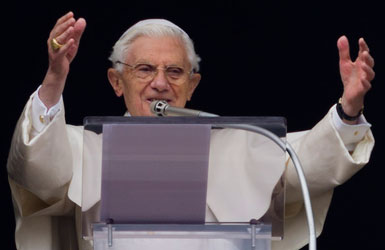The Vatican spokesman, Federico Lombardi, said on Tuesday, that Benedict will be called “His Holiness Benedict XVI., Emeritus Pope”. The pope’s title and what he would wear have been a major source of speculation ever since Benedict stunned the world and announced he would resign on Thursday, the first pontiff to do so in 600 years.
After his resignation on Thursday, Benedict XVI. is to be called “Emeritus Pope” (Papa emerito) or “Roman Pontiff Emeritus” (Romano Pontefice emerito). But one may also address Joseph Ratzinger with the title “Your Holiness”, Lombardi added.
 As on how the outgoing Pope should be addressed in the future, had been discussed over and over again. “Emeritus Bishop of Rome” was a hot favourite. Lombardi also said, the 85 Ratzinger will wear a “simple white cassock” after February 28. While he will no longer wear his trademark red shoes, Benedict has taken a liking to a pair of hand-crafted brown loafers made for him by artisans in Leon, Mexico, and given to him during his 2012 visit.
As on how the outgoing Pope should be addressed in the future, had been discussed over and over again. “Emeritus Bishop of Rome” was a hot favourite. Lombardi also said, the 85 Ratzinger will wear a “simple white cassock” after February 28. While he will no longer wear his trademark red shoes, Benedict has taken a liking to a pair of hand-crafted brown loafers made for him by artisans in Leon, Mexico, and given to him during his 2012 visit.
However it remains open, even after the question of the title is apparently resolved, what role the “Emeritus Pope” will play regarding his successor and the Vatican.
